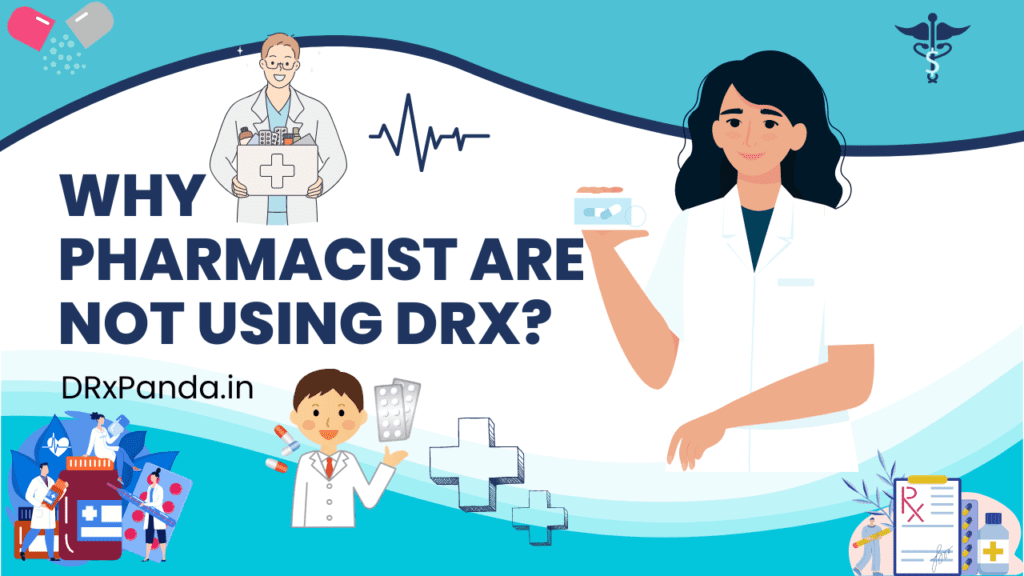What is DRx?
DRx, short for Digital Rx or Digital Prescriptions, is a revolutionary technology in the world of pharmacy. It replaces traditional paper prescriptions with digital prescriptions, which are easier to manage, less prone to errors, and more efficient.
Importance of DRx in Pharmacy
The importance of DRx in pharmacy can’t be overstated. It streamlines the prescription process, eliminates the possibility of handwriting errors, and can potentially save pharmacists a lot of time and resources. However, despite these apparent benefits, there’s a surprising trend emerging.

Why aren’t Pharmacists using DRx?
There are a few reasons that might explain why some pharmacists are hesitant to adopt DRx.
Technical Difficulties
The transition from a traditional system to a digital one is never seamless. The technical difficulties can be daunting for those who are not tech-savvy, causing some pharmacists to shy away from DRx.
Resistance to Change
People are naturally resistant to change. Many pharmacists have been practising in a certain way for years if not decades. The idea of learning a new system can be intimidating, even if that system offers significant benefits.
Lack of Awareness
Quite simply, many pharmacists might not know about DRx. Despite its growing popularity, it’s still a relatively new concept and has not been adopted universally.
Advantages of Using DRx
The advantages of using DRx are numerous.
Efficiency
DRx allows for a more efficient process. Pharmacists can receive, fill, and manage prescriptions digitally, saving a significant amount of time.
Accuracy
Digital prescriptions reduce the chance of errors. There’s no risk of misreading handwriting, and it’s much harder for mistakes to be made when inputting prescriptions.
Cost-Effectiveness
In the long run, DRx can be more cost-effective. While there might be some initial costs associated with setting up a digital system, the ongoing savings in terms of time and reduced errors can quickly offset these.
When Can a Pharmacist Use DRx?
Prescription Processing
A pharmacist can use DRx any time they’re processing a prescription. This could be a prescription from a doctor’s office, a hospital, or even a telemedicine service.
Drug Inventory Management
DRx can also be helpful for managing a pharmacy’s inventory. It can easily keep track of which drugs are in stock, and which ones need to be reordered, and can even automate much of this process.
Patient Consultations
Pharmacists can utilize DRx during patient consultations to quickly and efficiently access a patient’s prescription history and ensure they receive the most suitable medications. This helps guide conversations and ensure patients receive appropriate medication.
Pharmacists, like any healthcare professional, may or may not use specific software or technology platforms depending on various factors. However, as of my knowledge cutoff in September 2021, I am not aware of any widely recognized software or platform called “DRx” specifically tailored for pharmacists. It’s possible that “DRx” refers to a specific software or system that has been developed or introduced after my knowledge cutoff.
To address the question more generally, there could be several reasons why pharmacists may choose not to use a particular software or technology platform:
- Availability: The software may not be widely available or accessible to all pharmacists, especially if it is new or limited to certain regions or organizations.
- Compatibility: The software may not be compatible with existing pharmacy systems or infrastructure, making it challenging to integrate into daily operations.
- Functionality: Pharmacists may have evaluated the software and determined that it does not offer significant benefits or advantages over existing solutions or workflows.
- Cost: The software may come with a significant financial investment, including licensing fees, implementation costs, and ongoing maintenance expenses, which may deter pharmacists from adopting it.
- Training and Support: If the software requires extensive training or lacks sufficient technical support, pharmacists may opt for more familiar or user-friendly alternatives.
- Regulatory Compliance: Pharmacists must adhere to strict regulations and data privacy laws. If a software solution does not meet these requirements, it may not be suitable for use in pharmacy practice.
Notably, the information provided above reflects pharmacist software use up until September 2021. If DRx refers to specific software introduced post-2021, I may not have enough data about it; for more accurate and up-to-date data regarding their software preferences and usage patterns, it would be advisable to speak directly with pharmacists or pharmacy organisations.
Conclusion
Despite some resistance and hurdles, the adoption of DRx in pharmacies presents a multitude of benefits. From improving efficiency to reducing errors, DRx technology is undoubtedly a boon to the pharmaceutical industry. Pharmacists need to overcome the initial challenges to reap the long-term benefits of this digital transformation.
FAQs
Are there any drawbacks to using DRx?
The initial setup may require some technical knowledge and investment, but the ongoing benefits generally outweigh these initial challenges.
When can a pharmacist use DRx?
Pharmacists can use DRx during prescription processing, drug inventory management, and patient consultations.
What are the benefits of using DRx in a pharmacy setting?
Some benefits include increased efficiency, improved accuracy, and cost-effectiveness.
Why aren’t more pharmacists using DRx?
Some common reasons include technical difficulties, resistance to change, and a lack of awareness about the benefits of DRx.
What does DRx stand for?
DRx stands for Digital Rx or Digital Prescriptions. It’s a technology that replaces traditional paper prescriptions with digital ones.
